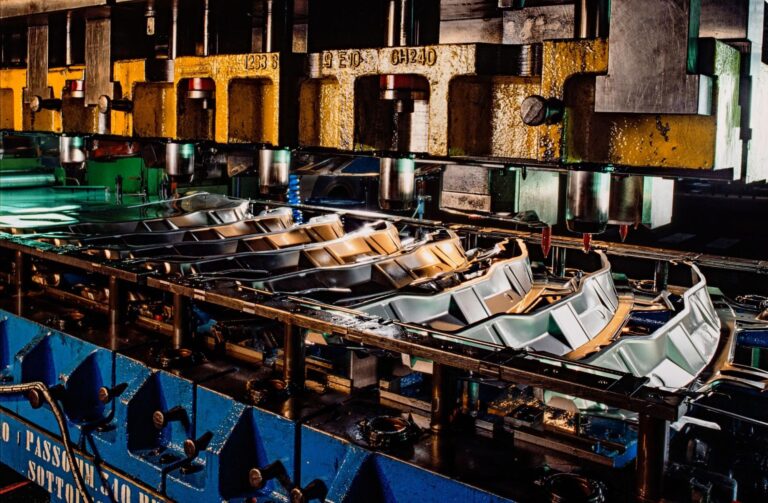Time to read: 4 min
Fictiv’s Monthly Supply Chain Update series gives you insight into the logistics challenges, transit times, and related manufacturing issues we’re currently facing.
In the early stages of the pandemic, demand for goods was depressed, and delays and shortages plagued production across industries around the world. While consumer demand and industrial activity have picked back up in 2021, we’re closing out the year with supply chain challenges overseas that have an effect on production lead times and delivery.
We’re right in the middle of what is traditionally the peak season for consumer demand, and that demand has been amplified with the vaccine rollout, major companies releasing new hardware, and countries reopening. Major freight carriers are trying different strategies to keep up with the shipping demand, but they’re still struggling to provide a solution to all the capacity issues in the market. There are 3 main reasons why:
- Shortage of Shipping Capacity
- Shortage of Labor
- Shortage of Electricity in China
We’re going to break down each in this article and let you know what we’re doing to mitigate the issues and deliver quality parts to our customers at the promised date.
Shortages in Shipping Capacity
International passenger flights — traditionally major sources of shipping capacity — are still limited because of the travel restrictions from the pandemic. This reduced capacity has forced exporters to look for other carriers, such as FedEx, DHL, and UPS. These carriers are now experiencing very high shipping volumes and are imposing daily weight restrictions to exporters that fluctuate weekly, and sometimes day-to-day.
You may have seen news reports about the over 100 container ships currently waiting along the West Coast to be unloaded. That backlog has been building since August, which means at least 1,000,000 containers are waiting to be unloaded. Exporters are now aware of the significant delays ocean shipping is facing and are opting for faster shipping methods to move the most urgent orders. The demand for air shipping keeps increasing.
Shortage of Labor
All those container ships sitting offshore are a symptom of a broader labor shortage in the US. There are currently over 10.4 million open positions in the US, and our major ports are struggling with staffing as well as truck drivers and warehouse workers. And, even if the docks can find enough workers to run the ports 24/7, they still don’t have anywhere to put offloaded containers.
Shortage of Electricity in China
As consumer demand has increased, industrial output has risen as well, but the manufacturing capacity in China has been curtailed by power outages that have been rolling through 22 provinces since the summer. The power rationing has severely restricted factories’ ability to operate, so they do so only 3-4 days a week and are running full night shifts when power is available.
The electrical shortages are driven by Chinese policy surrounding coal — the country banned coal imports from Australia last year, even though many of its power plants are fitted only to run on coal mined down under. This coal shortage has driven up fuel prices while the government has kept the price of power low, resulting in some power plants going bankrupt while others are choosing to shut down or operate on a limited basis rather than operate at a loss.
China is ramping up domestic coal production, but the country’s power grid problems are expected to continue into 2022.
How These Shortages Affect the Supply Chain
In general, all of these shortages have combined to increase the costs of production and time between order and delivery. Many businesses have goods waiting on container ships with no idea when they will be unloaded and delivered.
Prices for raw materials, especially aluminum and steel, are increasing, as are lead times for production here in the US. And Chinese factories are pushing out lead times or are increasing their prices to cover the delays and added costs incurred thanks to power rationing.
How Fictiv is Mitigating These Issues
While many of the forces at play are beyond our control, Fictiv is constantly adapting to ensure we continue to deliver quality parts to our customers at the promised date. Our network of manufacturing partners in the US and abroad puts us in a powerful position because our sourcing department places work strategically and expands and contracts our operations as demand dictates.
Our overseas team is monitoring the power situation in China carefully and is directing new work accordingly. And our longstanding relationships with many of our overseas suppliers are also helping us limit short-term cost increases.
We’re pushing for more capacity every day with freight carriers to ensure our products are getting shipped and delivered on time. Our international logistics team is constantly leveraging shipping capacity with different carriers to work around the daily limits and minimize shipping lead times.
Currently, most carriers’ 3-day international shipping services are actually taking 5-7 business days — with 90% of shipments arriving within 7 days. The Fictiv platform transit time estimates reflect this reality.
Key Takeaways
- Shipping transit times for air freight cargo coming from China will continue being at least 7 business days, as the holiday shopping season is increasing demand and there’s little corresponding increase in shipping capacity coming from the carriers
- Manufacturing costs in China might continue to increase due to power shortages and increased costs of electricity production
We all know that time is of the essence, and these issues are causing concerns across sectors. It may be time to consider switching to domestic production because carriers are currently delivering 98% of domestic shipments on time. We also recommend mixing and matching domestic and overseas production, and adding more lead time when placing orders overseas.










